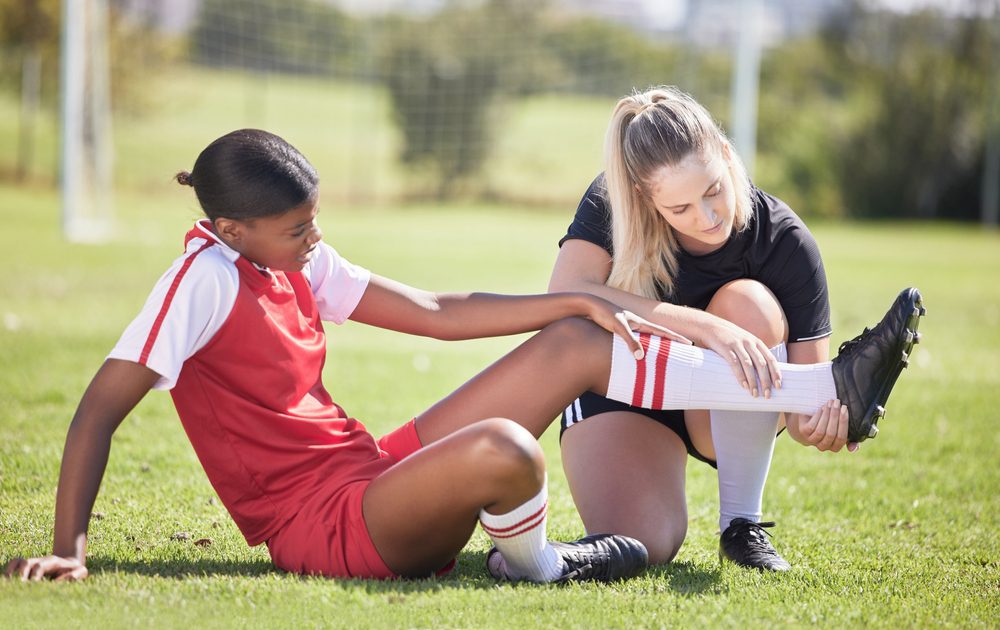Staying active supports strength, balance, and mood, yet sports injuries interrupt training and daily life. These injuries range from minor tissue irritation to ligament tears. They arise from overuse, poor mechanics, sudden load, or inadequate recovery. Here are some typical problems and practical steps to lower risk:
Sprains & Strains
Sprains affect ligaments, while strains involve muscles or tendons. A sharp twist, a missed step, or fatigue may lead to these soft-tissue injuries. Symptoms include pain, swelling, bruising, and limited movement; a pop may occur with more severe sprains. While mild cases settle with rest and progressive loading, severe tears may need medical assessment and care. Prevention steps include:
- Warm up with light cardio, then dynamic moves like leg swings and lunges.
- Progress training load by no more than modest weekly jumps, and rotate high- and low-impact days.
- Train strength around key joints, including the hips, core, ankles, and shoulders.
- Use supportive footwear for your sport and replace worn-out shoes.
Balance drills, such as single-leg stands, challenge stabilizers and reduce awkward landings. Tape or braces are sometimes used during return to play, though technique and strength form the base. Cooldowns with gentle mobility work help tissue recovery.
Plantar Fasciitis
If you have pain in the heel or arch, the plantar fascia may be irritated. This tough band supports the foot’s arch, and repetitive loads from running, long shifts on hard floors, or a sudden increase in mileage can stress it. While the pain may ease as you move, it returns after rest or longer efforts.
Build a routine that blends load management with targeted care for sports injuries. Start by trimming sudden volume increases; shift some runs to softer surfaces, and mix in cycling or swimming. Next, address calf and foot strength. Short foot exercises, towel curls, and calf raises help support the arch, and a gradual approach helps limit flare-ups.
Night splints may keep the fascia in a lengthened position, which some athletes find helpful. Shoes with adequate arch support and a slight heel-to-toe drop may ease strain; replace pairs that are compressed. If pain persists beyond a few weeks or worsens, a clinician’s assessment rules out other causes like nerve irritation or stress fracture.
Heel Pain & Tendinitis
Heel pain and tendinitis may result from overload problems, but their symptoms can vary. It tends to stiffen after rest, improve with light movement, and worsen with hills or sprints. To manage pain, perform heel drops on flat ground for foot issues or off a step for other areas.
Adjust your running habits by limiting consecutive intense sessions, reducing the number of hills, and spacing out speed work with recovery periods. In team sports, plan jumps and sprints for the middle of practice, when you’re warm but not yet fatigued, to prevent mechanics from breaking down. Applying ice after high-load activities may help reduce soreness, and wearing heel lifts in shoes can help decrease tendon strain during flare-ups. If you experience swelling, warmth, or a sudden popping sensation, stop activity immediately and seek evaluation to rule out a potential tear.
Get Guidance for Sports Injuries
Manage risk by building strength, progressing load, and addressing mechanics. Respond sooner when pain persists or limits function. Track your training volume, rotate high-impact and low-impact days, and get enough sleep to support tissue repair. If a problem lingers beyond a couple of weeks, if you notice night pain, or if weight-bearing becomes difficult, book an assessment with a doctor. Reach out to a sports medicine or physical therapy provider to review your training plan, refine technique, and create a recovery process.

Leave a Reply